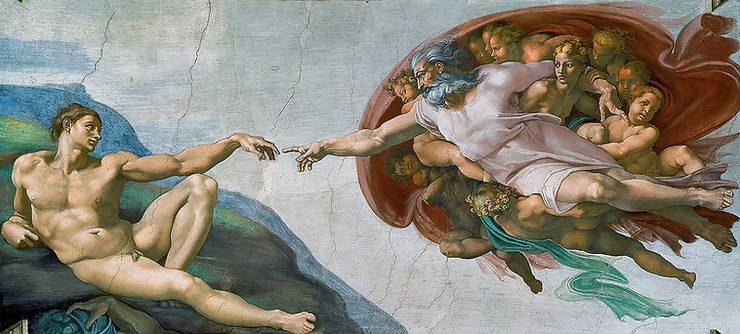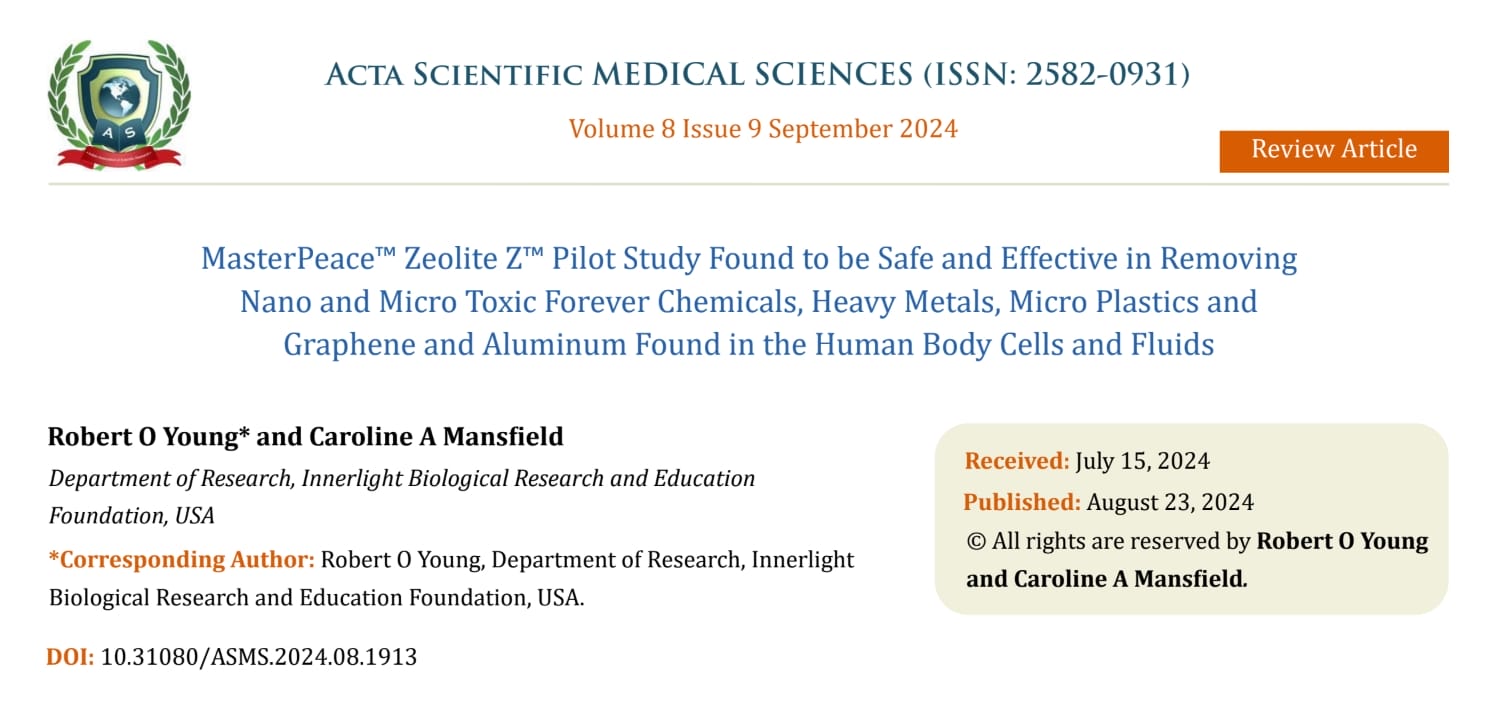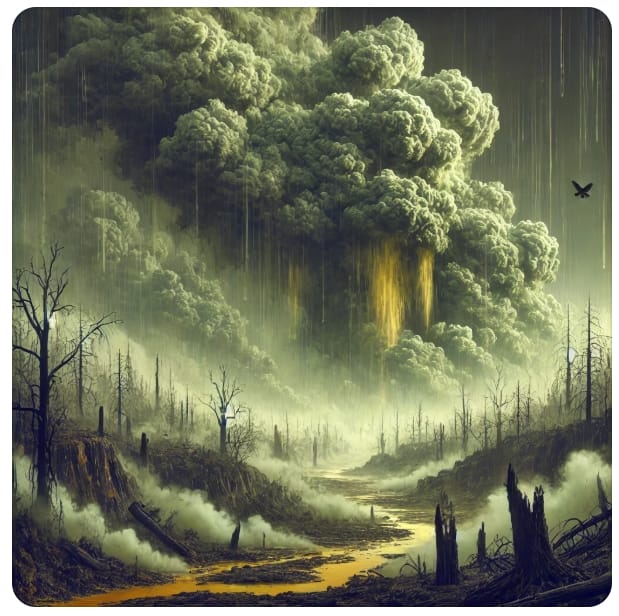Do Germs Cause Infection, Disease and Death?
Updated: Jul 15, 2022


The Magic Eraser
There have been several notable occasions in history when persons offering invaluable contributions to the advancement of human understanding have been ignored, ridiculed and even persecuted in their time. In most cases, however, their work has subsequently been given a deserved measure of recognition. Some great ones, though, have not enjoyed such rejuvenation and have “suffered the slings” of obscurity.
So it is with BeChamp’s [1].
Had the profound voice of his science not been silenced, much of humankind may have been spared the worst aspects of the infectious or vital stresses of the 20th century. Since the case can be made that the approved but improper and dangerous treatment of infectious “diseases” over the last century has in large part given rise to the present epidemic wave of degenerative “disease,” including cancer, Parkinson’s, Alzheimer’s, Autism, AIDSyndroine or HIV, Ebola and SARS COVID 2 and 19, we might have been spared these miseries as well. At the least, we would have understood much more clearly why we have them. Fortunately, however, BeChamp’s [1] work has been kept alive by small, successive bands of truth-seekers.
The adoption by science of Louis Pasteur’s germ theory as the whole truth, without regard to the subtleties and deep insight of Bechamp’s [1] microzymian principle, represents one paraphrased: “There is no medical doctrine as potentially dangerous as a partial truth implemented as whole truth.” Any medical professional, bioscientist, health care practitioner, or lay person for that matter, who wishes to gain insight into the origins and nature of infectious and chronic illness, against the backdrop of a marvelous view of the life process, must consider BeChamp. And they must entertain one of the most important concepts to come out of his illustrious career-microbiological pleomorphism as it relates to disease and its symptoms.

There are four books written about him of which I am aware (although there are very likely more) and many works published by him (over 27 books of which I have all the microfiche). Of the ones by him, all except one are in the original French. Fortunately, his last book, The Blood and Its Third Anatomical Element, was translated into English in 1911 by Montague [1], M.D., Ph.D., M.A., although it has been difficult to obtain.(You can request of copy at: phmiraclelife@gmail.com) Of the two major books about him, one is in French and the other [2] is also rare. The other two books about BeChamp [1] are by R.B. Pearson. The Hume [2] book, one Pearson book, and The Blood are once again available as reproductions in the U.S. after a hiatus of several years.

Bechamp [1] considered ‘The Blood’ his crowning work, and therein he describes an amazing micro anatomical entity and its participation in the clotting process. He also includes details of his work and his experiences with the plagiarisms and “pettifogging ratiocinations” of Louis Pasteur. The French book about him, which author Christopher [3] praised highly to this writer, is by Marie Nonclercq, entitled BeChamp [1], 1816- 1908: L’Homme et le Savant, Originalite et Fecondite de Son Oeuvre. The latter part means,
The Man and the Scientist, the Originality and Productivity of His Work. According to Christopher [4], in an account given at a 1991 facts that did not set well with reigning theory, many questions arose… as I read essays and books, of a heretical nature, one could say, written by researchers whose names I never heard mentioned in my classes. Twenty years ago, the World Health Organization proudly declared recently the discovery that the single greatest factor in heart disease is a vitamin E deficiency.
Also perversely awe-inspiring is the fact that a person of BeChamp’s [1] extraordinary accomplishments has been written out of history books, textbooks and all encyclopedias. It is sobering to consider the required degree of authoritarian control over key academic elements in our culture. It is not my intention to belabor the politics, but as the wonders of BeChamp’s work unfold to the mind, the question simply arises, “Why is this not common knowledge?” Yet, we must be grateful that his “erasure” was far from complete.
It is difficult to do full justice to BeChamp [1] without recourse to a book. His work was incessant and prodigious, and his observations prolific. I will attempt to convey some essentials of his biological work-only a part of the picture, as the total output includes chemistry, medicine and pharmacy. He left a remarkable legacy of scientific insight that borders on the spiritual, yet died in relative obscurity with virtually no recognition by peers or the public. Having outlived his wife, his beloved associate Professor Estor, and his four children, he had to endure those hard lessons of life in addition to the one of professional anonymity. However, in keeping with his extraordinary mind, he never lost conviction that the truth would come to light, as would his role in its revelation.
I’m not sure why, when his life touched mine through E. BeChamp is known among a coterie of modern and contemporary admirers, and his work has been followed up, knowingly or not, by perhaps a total of 50 scientists. This group includes such names as Gunther Enderlein; Wilhelm Reich; Royal Raymond Rife; the courageous Australian team of Kalokerinos et al. [5], M.D. (who for many years published information in the Toorak Times, an Australian newspaper); and Naessen [3], including myself, who have brought the BeChampian locomotive to a full head of steam.


It is at once unbelievable and understandable that the superficial dogma of Pasteur [2] could have prevailed over BeChamp’s insights in the 19th century French Academy of Science. Unbelievable because of the meticulous documentation and presentation BeChamp [1] made of his prolific work. Understandable because Pasteur [2] stole enough of the truth to make it pass, while having on his side upper class connections and a doctrine that more suited the cultural (especially religious) moods of the time.
Abetting, if not creating, an atmosphere repressive to truth was a mood of impassioned ignorance among ecclesiastic authorities at the University of Lille, where BeChamp [1] had moved in 1875 to teach. In a manner similar to that which devastated Galileo, they vigorously opposed the “heresy” of the microzymian view. Heightening the poignancy of this tragedy was the depth of that ignorance, which was unable to realize that the view was not heretical at all. In fact, Bechamp was a devout Christian who felt his inquiries merely to be revealing the Creator’s modus. But it is perversely awe-inspiring to see such bias having persisted for a century, supported by the structure of authority in bioscience, so that BeChamp’s principles have not yet (2015) been given fair examination in the mainstream.

Things may soon change-for a number of reasons, not the least of which is that research in the medical literature is now burning a raging blaze below the lofty suite in which the few powerful controllers lurk. They will soon have to surrender themselves at the window, or be consumed by the flames. Of course, one way in which they surrender is to rediscover the truth, that is, claim credit for making scientific “discoveries” about matters long ignored or repressed by them and long held as principle in alternative venues. For example, “science” has just discovered that antioxidants are good for asthma, especially vitamins C and E. And after the tireless, definitive work on vitamin E by the Shute brothers probably 20 years ago, the World Health Organization proudly declared recently the discovery that the single greatest factor in heart disease is a vitamin E deficiency.
Also perversely awe-inspiring is the fact that a person of BeChamp’s [1] extraordinary accomplishments has been written out of history books, textbooks and all encyclopedias. It is sobering to consider the required degree of authoritarian control over key academic elements in our culture. It is not my intention to belabor the politics, but as the wonders of Bechamp’s work unfold to the mind, the question simply arises, “Why is this not common knowledge?” Yet, we must be grateful that his “erasure” was far from complete.

Dr. Young in Paris in 1999 at the University of Paris Medical Library Holding Antione BeChamp’s Master Piece on the Terrain Theory and Pleomorphism – Les Microzymas!

It is difficult to do full justice to BeChamp without recourse to a book. His work was incessant and prodigious, and his observations prolific. I will attempt to convey some essentials of his biological work-only a part of the picture, as the total output includes chemistry, medicine and pharmacy. He left a remarkable legacy of scientific insight that borders on the spiritual, yet died in relative obscurity with virtually no recognition by peers or the public. Having outlived his wife, his beloved associate Professor Estor, and his four children, he had to endure those hard lessons of life in addition to the one of professional anonymity. However, in keeping with his extraordinary mind, he never lost conviction that the truth would come to light, as would his role in its revelation.
In 1994, Dr. Robert O. Young Reveals the Nature of Matter and its Ability to Alter its Form and Function Validating the Work of Dr. Antione BeChamp and the Doctrine of Pleomorphism!
The Work of Dr. Robert O. Young on Biological Transformation or Pleomorphism as Seen Under Brightfield and Phase Contrast Microsocpy

I’m not sure why, when his life touched mine through Douglas [2] historical biography, such a strong feeling arose in me-the need to “exonerate” him, to bring his name and work to their deserved place of honor in history. Part of it, I’m sure, as with M. Nonclercq, is realizing the health benefits society might reap from understanding him, not to mention the inspiring, if not magical, insight into life and being that his views represent. But I’m still not quite sure why I want to be able to say (if in some way my various expositions about him over the last two decades, added to the voices of others who have seen with his eyes, contribute to open re-evaluation of his science), “There, Antoine! Rest in peace, my teacher, my brother, my friend, your work is NOW being shared with the entire World!”[12]

To acquire a hard copy of this article you can order your copy at:





Learn more about biological transformation or pleomorphism of matter in the following lecture given by Dr. Robert O. Young at the Harvard Scholl of Medicine.
The Harvard Lectures – ‘Towards the Ethics of Healing’ begins the debate on human health and how we should treat any sickness and disease. Watch and learn the truth about Dr. Robert O Young’s work, research and findings and learn how to prevent, treat and reverse heart disease, diabetes, cancer, autism, just to name a few in this 3 Part lecture at Harvard University School of Medicine.
1. Dr. Robert O Young’s Harvard Lecture – Towards the Ethics of Healing – Part 1 of 3 – https://youtu.be/kpUYMGo7hsw
2. Dr. Robert O Young’s Harvard Lecture – Towards the Ethics of Healing – Part 2 of 3 – The Law of Change – https://youtu.be/J7NJql-jwVQ –
3. Dr. Robert O Young’s Harvard Lecture – Towards the Ethics of Healing – Part 3 of 3 – The Harvard Lecture – Part 3 – The New Biology – https://youtu.be/6I1E2C8os_Q
YOU NEED HELP from Dr. Robert O. Young’s pH Miracle Lifestyle and Protocol and Dr. Robert O. Young NEEDS YOUR HELP!
Please Support Dr. Robert O. Young with YOUR PRAYERS AND DONATIONS! https://www.givesendgo.com/G2Z76

References
1. BeChamp A (1912) The Blood and Its Third Anatomical Element. In: Montague R Leverson & translator (Eds.), John Ouseley Limited, London, UK.
2. Douglas HE (1923) Bechamp or Pasteur? CW Daniel Co Ltd, England, UK.
3. Christopher D (1991) The Persecution and Trial of Gaston Naessens. Kramer HJ, Tiburon, USA.
4. Christopher D (1991) To Be or Not to Be? A paper presented in an address to L’Orthobiologie Somatidienne Symposium, Sherbrooke, Quebec, hosted by Gaston Naessens.
5. Kalokerinos A, Dettman G (1977) Second Thoughts About Disease/ A Controversy and BeChamp Revisited. Biological Research Institute, Warburton, Australia 4(1).
6. RO Young, SR Young (2010) The pH Miracle. Hachette Publishing, New York, USA.
7. RO Young, Sick and Tired (1999) Reclaim Your Inner Terrain. Woodland Publishing, Utah, USA.
8. Margulis Lynn, Sagan Dorion (1986) Micro-Cosmos: Four billion years of evolution from our microbial ancestors. Summit Books, New York, USA.
9. Lynes, Barry (1987) The Cancer Cure That Worked! Fifty Years of Suppression. Marcus Books, Ontario, Canada, pp.167.
10. Christopher H (1977) Nuclear Evolution. In: Boulder Creek & Cal (Eds.), (2nd edn), University of the Trees Press, USA, pp. 1009.
11. S. Ayoade, The Differences Between the Germ Theory, the Terrain Theory and the Germ Terrrain Duality Theory, JOJ Nursing and Health Care, September 19, 2017.
12. RO, Young (2016) Who Had Their Finger on the Magic of Life – Antoine BeChamp or Louis Pasteur?. Int J Vaccines Vaccin 2(5): 00047. DOI: 10.15406/ijvv.2016.02.00047



